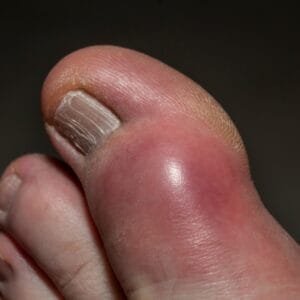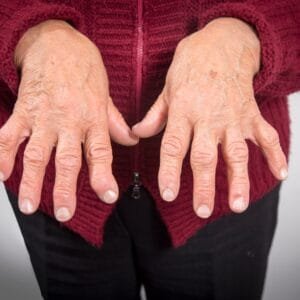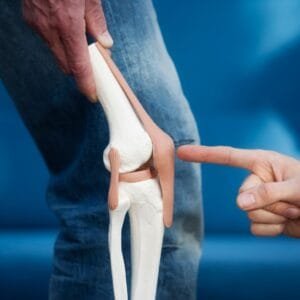Musculoskeletal Disorders: Causes, Symptoms, and Treatment
Musculoskeletal disorders (MSDs) refer to a wide range of conditions that affect the muscles, bones, joints, tendons, ligaments, and other connective tissues. These disorders can result from injury, overuse, or chronic conditions and are a leading cause of pain, disability, and reduced quality of life worldwide. Early diagnosis and treatment are crucial for managing symptoms and preventing complications.



What are Musculoskeletal Disorders?
Musculoskeletal disorders are conditions that impair the normal function and structure of the musculoskeletal system. They can be acute, caused by a sudden injury, or chronic, developing over time due to wear and tear or underlying health conditions.
MSDs can affect any part of the body and range in severity from mild discomfort to debilitating pain and mobility issues.
Common Types of Musculoskeletal Disorders
- Arthritis: Includes osteoarthritis and rheumatoid arthritis, affecting joints.
- Osteoporosis: Weakening of bones, increasing the risk of fractures.
- Back Pain: Includes herniated discs and sciatica.
- Tendonitis: Inflammation of tendons, often caused by overuse.
- Carpal Tunnel Syndrome: Compression of the median nerve in the wrist.
- Fibromyalgia: Chronic pain affecting muscles and soft tissues.
- Fractures and Sprains: Caused by trauma or accidents.
Causes of Musculoskeletal Disorders
The causes of musculoskeletal disorders vary widely depending on the condition but commonly include:
- Injuries:
- Sudden trauma, such as fractures, sprains, or dislocations.
- Overuse or Repetitive Strain:
- Frequent repetitive motions or heavy lifting can lead to conditions like tendonitis or bursitis.
- Aging:
- Natural wear and tear on joints and bones increases susceptibility to conditions like osteoarthritis and osteoporosis.
- Poor Posture:
- Prolonged sitting, slouching, or improper ergonomics can lead to chronic back and neck pain.
- Underlying Diseases:
- Autoimmune diseases, such as rheumatoid arthritis or lupus.
- Genetic Factors:
- Family history of musculoskeletal conditions increases risk.
- Lifestyle Factors:
- Sedentary lifestyle, smoking, and poor nutrition.
Symptoms of Musculoskeletal Disorders
Symptoms of MSDs vary based on the affected area and severity of the condition but may include:
- Pain:
- Persistent or intermittent pain in muscles, bones, or joints.
- Stiffness:
- Difficulty moving joints or muscles, especially after periods of inactivity.
- Swelling and Inflammation:
- Common in arthritis and soft tissue injuries.
- Weakness or Fatigue:
- Reduced muscle strength or chronic tiredness.
- Limited Range of Motion:
- Difficulty bending, stretching, or performing daily tasks.
- Numbness or Tingling:
- Often seen in nerve-related conditions like carpal tunnel syndrome.
Diagnosis of Musculoskeletal Disorders
Diagnosing MSDs involves a combination of clinical evaluation, imaging studies, and laboratory tests:
- Medical History and Physical Examination:
- Evaluate symptoms, family history, and lifestyle factors.
- Imaging Tests:
- X-rays: Identify fractures or joint abnormalities.
- MRI or CT Scans: Provide detailed images of soft tissues and bones.
- Blood Tests:
- Detect inflammation markers, autoimmune conditions, or vitamin deficiencies.
- Bone Density Tests:
- Assess for osteoporosis.
- Electromyography (EMG):
- Evaluates nerve and muscle function, particularly in conditions like carpal tunnel syndrome.
Treatment Options for Musculoskeletal Disorders
Treatment depends on the specific condition, its severity, and the patient’s overall health. Common approaches include:
Non-Surgical Treatments
- Medications:
- Pain Relievers: NSAIDs (e.g., ibuprofen, naproxen) or acetaminophen.
- Anti-Inflammatories: Corticosteroids to reduce inflammation in conditions like arthritis.
- Bone Health Medications: Bisphosphonates for osteoporosis.
- Muscle Relaxants: Relieve muscle spasms.
- Physical Therapy:
- Improves strength, flexibility, and range of motion.
- Lifestyle Modifications:
- Weight loss, ergonomic adjustments, and regular exercise.
- Assistive Devices:
- Braces, orthotics, or canes to provide support and reduce strain.
- Complementary Therapies:
- Acupuncture, massage therapy, or chiropractic care for pain relief.
Surgical Treatments
For severe or unresponsive conditions:
- Joint Replacement:
- Common for advanced arthritis (e.g., hip or knee replacement).
- Arthroscopy:
- Minimally invasive surgery to repair damaged joints.
- Spinal Surgery:
- Corrects herniated discs or spinal deformities.
- Fracture Repair:
- Fixation with plates, screws, or rods.
Managing Musculoskeletal Disorders at Home
Self-care strategies can help reduce symptoms and improve quality of life:
- Exercise Regularly:
- Focus on low-impact activities like swimming, yoga, or walking.
- Use Proper Ergonomics:
- Adjust workstations and seating to prevent strain.
- Apply Heat or Cold:
- Heat helps relax stiff muscles, while cold reduces inflammation.
- Eat a Balanced Diet:
- Ensure adequate calcium and vitamin D for bone health.
- Practice Stress Management:
- Stress can worsen chronic pain; use relaxation techniques like meditation.
Preventing Musculoskeletal Disorders
Taking preventive steps can reduce the risk of developing MSDs:
- Maintain Good Posture:
- Avoid slouching while sitting or standing.
- Stay Active:
- Engage in regular physical activity to strengthen muscles and bones.
- Lift Safely:
- Use proper techniques and avoid heavy lifting whenever possible.
- Wear Supportive Footwear:
- Reduces stress on joints and spine.
- Quit Smoking:
- Smoking impairs bone health and delays healing.
Complications of Musculoskeletal Disorders
If left untreated, MSDs can lead to:
- Chronic Pain:
- Persistent pain that interferes with daily life.
- Reduced Mobility:
- Difficulty performing daily tasks or maintaining independence.
- Joint Deformities:
- Severe arthritis can result in joint damage and deformities.
- Fractures:
- Particularly in individuals with osteoporosis.
FAQs about Musculoskeletal Disorders
1. What causes musculoskeletal disorders?
MSDs are caused by injuries, overuse, aging, poor posture, and certain diseases like arthritis or osteoporosis.
2. How are musculoskeletal disorders treated?
Treatment options include medications, physical therapy, lifestyle changes, and surgery for severe cases.
3. Can musculoskeletal disorders be prevented?
Yes, through regular exercise, good posture, proper ergonomics, and maintaining a healthy lifestyle.
4. What are the most common symptoms of MSDs?
Symptoms include pain, stiffness, swelling, fatigue, and limited range of motion.
5. When should I see a doctor for musculoskeletal pain?
Seek medical attention if the pain is severe, persistent, or accompanied by swelling, redness, or loss of function.
Conclusion
Musculoskeletal disorders are a leading cause of pain and disability, but with proper diagnosis and treatment, many individuals can manage symptoms and maintain an active lifestyle. By adopting preventive measures, seeking timely medical care, and following a tailored treatment plan, you can reduce the impact of MSDs and improve your quality of life. If you experience persistent musculoskeletal symptoms, consult a healthcare professional for personalized guidance.
